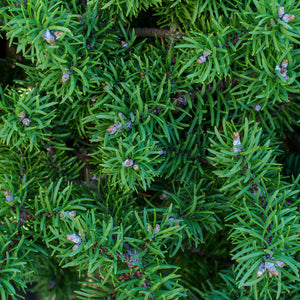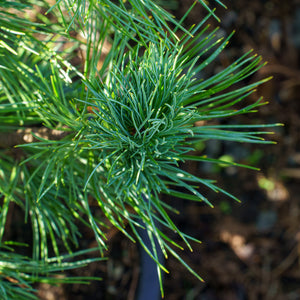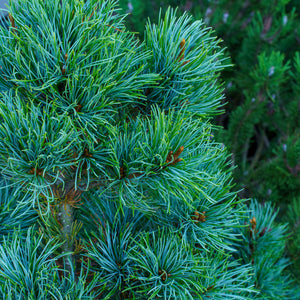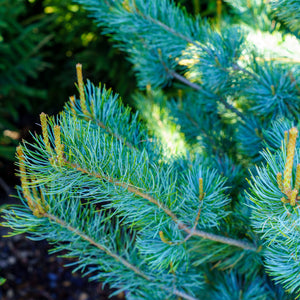The Pine Guide
Pines (Pinus spp.) are among the most versatile and widely recognized evergreen conifers, known for their needle-like foliage, woody cones, and year-round appeal. With species ranging from miniature shrubs to towering giants, pines serve essential roles in both formal and naturalistic landscapes. They offer structure, shelter for wildlife, and a wide range of visual textures, from soft and feathery to stiff and architectural. Whether you need erosion control on a slope or a dramatic focal point in the garden, there is a pine suited for the task.
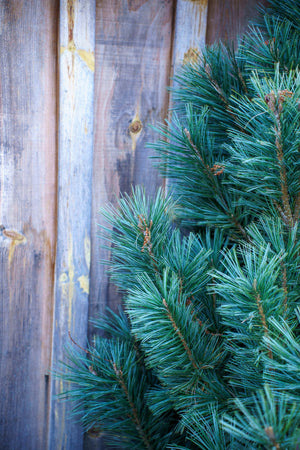
About
Pine trees (Pinus spp.) are iconic evergreens belonging to the Pinaceae family, recognized for their long needles, rugged cones, and adaptability across a broad range of climates. Found throughout the Northern Hemisphere, pines range from towering forest giants to compact dwarf cultivars ideal for foundation plantings and rock gardens. Their botanical diversity, year-round presence, and wildlife value have made them indispensable to both natural forests and cultivated landscapes.
The genus includes more than 100 species, with commonly grown types including eastern white pine (Pinus strobus), Austrian pine (Pinus nigra), Japanese white pine (Pinus parviflora), Korean pine (Pinus koraiensis), and mugo pine (Pinus mugo). Each brings a unique shape, needle color, and growth habit suited for different uses—from windbreaks and privacy screens to specimen trees and low-maintenance groundcovers.
Eastern white pine is a soft-needled species that can grow over 80 feet tall in natural conditions, while dwarf forms like 'Blue Shag' and 'Sea Urchin' offer dense, compact growth for small gardens. Austrian and Scots pines provide rugged structure and deep green needles, making them excellent background trees. Mugo pines are valued for their small stature and work well in alpine and foundation plantings.
In addition to form and texture, pines provide year-round color in shades of green, blue, and silver. Their resinous scent and ornamental cones add to their appeal. Pines are also important for supporting native wildlife, providing food and cover for birds, squirrels, and beneficial insects.
While some species require ample space, others are well-suited for tight gardens and containers. With their adaptability to poor soils, drought tolerance once established, and minimal pruning requirements, pines are foundational plants in modern landscape design.
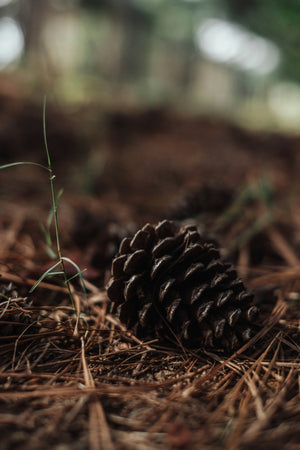
PLANTING
Choosing the right pine for your space and planting it correctly will ensure decades of performance.
USDA Hardiness Zones: Most pines are hardy in Zones 3–7, though some species like Pinus thunbergii and Pinus elliottii tolerate Zone 8 or warmer.
Soil: Well-drained soil is essential. Pines do not tolerate heavy clay or consistently wet roots. Sandy or loamy soils are ideal.
Sunlight: Pines require full sun for healthy growth and dense branching. At least 6–8 hours of direct sunlight daily is recommended.
Watering: Water regularly during the first 1–2 years to establish roots. Once established, most pines are drought-tolerant.
Spacing: Follow mature size recommendations. Small mugo pines can be spaced 3–5 feet apart, while large trees like Pinus strobus need at least 20–30 feet.
Planting Time: Early spring or fall is ideal. Avoid planting during extreme heat or cold snaps.
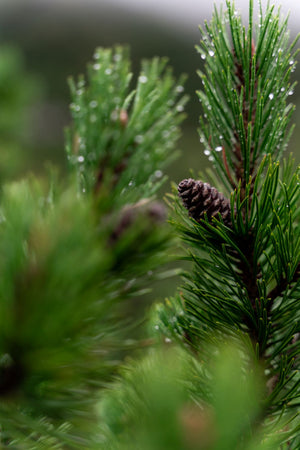
CARE
Watering: Deep, occasional watering is best once established, especially during prolonged drought.
Fertilizing: Pines typically need little fertilizer. If desired, apply a balanced, slow-release fertilizer in early spring.
Pruning: Minimal pruning is required. To control shape, pinch or shear new candles in spring. Remove dead or damaged limbs at any time.
Pests and Diseases: Common issues include pine wilt, tip blight, and bark beetles. Monitor for yellowing needles, dieback, or sap oozing from the trunk. Proper spacing and hygiene help prevent most problems.
Mulching: Apply mulch to conserve moisture and suppress weeds. Keep mulch a few inches from the trunk to avoid rot.
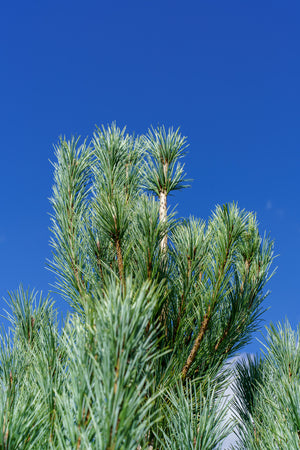
HOW TO USE
Focal Point: Pines like ‘Chief Joseph’ or ‘Thunderhead’ are bold focal points thanks to unique color or shape. Use them as specimens in rock gardens or open lawns.
Evergreen Screens and Windbreaks: Species like Pinus nigra and Pinus strobus are ideal for dense screening and wind protection. Space adequately and plant in staggered rows for quick coverage.
Foundation and Small Space Plantings: Compact forms like Pinus mugo ‘Mops’ or Pinus cembra ‘Glauca Nana’ suit tight areas and modern gardens where evergreen structure is needed.
Rock Gardens and Slopes: Dwarf pines like Pinus mugo ‘Jakobsen’ or Pinus sylvestris ‘Hillside Creeper’ are perfect for erosion control and groundcover use.
Bonsai and Architectural Gardens: Japanese white pines (Pinus parviflora) and black pines (Pinus thunbergii) are ideal for bonsai or sculptural landscapes.
Wildlife Gardens: Pines offer critical shelter and food for birds, squirrels, and pollinators. The cones attract wildlife while dense foliage provides nesting habitat.
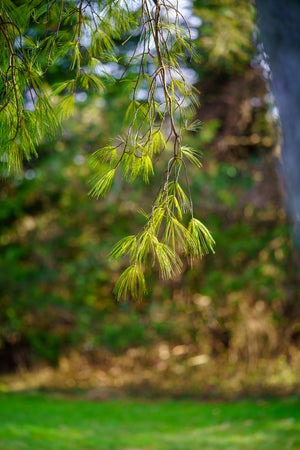
Common Questions
How long do pine trees live? Many pines live 50–150 years, but some species like Pinus longaeva can exceed 4,000 years.
How long does it take a pine tree to grow? Growth rates vary. Fast growers like Pinus strobus can grow 2–3 feet per year, while dwarf or alpine species may grow only a few inches.
Are pine trees toxic to cats or dogs? Some species may cause mild gastrointestinal upset if ingested, especially needles or bark. Pine oils and sap can irritate sensitive pets.
How to trim a pine tree? Minimal pruning is needed. To shape, trim back new growth (candles) in spring. Avoid cutting into old wood.
Do pines need full sun? Yes, full sun is required for healthy growth and dense foliage.
How to plant pines? Dig a hole twice as wide as the root ball and just as deep. Backfill with native soil and water thoroughly. Mulch and monitor soil moisture.
What are some good low-growing pines? Try Pinus mugo ‘Slow Mound’, Pinus cembra ‘Glauca Nana’, or Pinus sylvestris ‘Hillside Creeper’.
How tall can pines grow? Large species like Pinus strobus can reach 80–100 feet. Dwarf and miniature types may stay under 3 feet.
Conclusion
Pines offer timeless structure, evergreen color, and exceptional adaptability across a wide range of garden styles. From compact mugo pines to towering eastern white pines, these conifers serve vital ornamental and functional roles. With careful selection and proper siting, pines can thrive for generations—offering beauty, habitat, and texture all year long.
The Pine Collection
Sold Out
Sold Out
Sold Out

